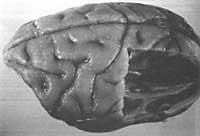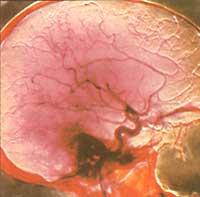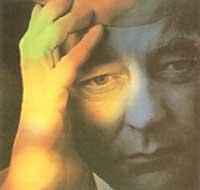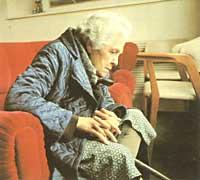Decade of the brain
1990/10/01 Agirre, Jabier - Medikua eta OEEko kidea Iturria: Elhuyar aldizkaria

On July 25, 1989, US President George Bush signed a statement at the White House at the request of the United States Congress, considering the 1980s as a decade of the brain. Through this Decree, the US assumes a commitment, giving absolute priority to research in neurosciences. Scientists, educators, people and organizations of the health system commit to join forces in the fight against brain disorders, taking advantage of the advantages offered by the technical and therapeutic developments in this branch of medicine.
More than 50 million annually of neurological, cerebrovascular problems, degenerative CNS diseases, drug addiction, cranial or American traumatisms with problems related to environmental neurotoxics. The economic costs of these disorders exceed 300 billion dollars annually in the US. The implantation of the decade that began on January 1, 1990 as a brain decade is mainly due to three reasons:
- Need to deepen our knowledge about the structure and functioning of the human brain, the most perfect machine ever created.
- The impact generated by the last 20 years in neuroscience research, the wealth of knowledge acquired in recent years and the fertility of this field (to the point that in the last 25 years 15 neuroscientists have won the Nobel Prize for Medicine and Physiology).
- Note that today the last barrier of medicine are degenerative diseases of the central nervous system in the industrialized countries.


Following the great achievements in the knowledge and treatment of cancer and cardiovascular disorders and the spectacular scientific advances, the degenerative diseases of the CNS are currently the main objective of biomedical research. In recent years, great advances have been made in the two main groups (cancer and cardiovascular diseases) that were the main causes of disease and death for humans. Many of these advances have been achieved thanks to biomedical research and others have been achieved thanks to purely hygienic or dietary measures (control of blood pressure, change of dietary habits, increase of physical activity) or through the prevention of tobacco.
Thus, XX. After the decline in infectious diseases in the mid-twentieth century and the significant reduction in the pathology associated with cardiovascular diseases and cancer (the frequency of cardiovascular diseases has decreased by almost half between 1960 and 1980), life expectancy has increased considerably in industrialized nations. But today we have the new challenge: the most degenerative disease of the nervous system, which in the elderly is the main cause of invalidity or death.
The declaration of the Congress of the United States implies an increase of 100% in the practice of the next decade of the amounts destined to investigation. The annual figure is $800,000 million for research in neurosciences, a huge figure that will finance 60% of research projects instead of the current 10%.

The development of neurosciences in the coming years and the forecast of possible discoveries for the next decade are:
- Just 10 years ago they were known brain neurotransmitters. At this time more than 40 substances have been identified capable of channeling communication between neurons. We hope to know better how these neurotransmitters intercommunicate in the coming years, what is the final consequence of the different imbalances and how these knowledge can be used in the treatment of diseases such as Parkinson's disease, epilepsy, Huntington's Korea or Alzheimer's disease.
- 10 years ago we only started using recombinant DNA technology. At present, genetic disease markers have been identified (Huntington Korea, Alzheimer's dystonia, etc. ). We hope to have a more complete map of abnormal genes from neurological diseases in the next decade, while improving or curing some of these disorders (why not?) We are in a position to think that they will begin to introduce and use their techniques of gene therapy.
- 10 years ago we thought it was impossible to replace or repair damaged neurons by traumatisms or diseases. Today we know that neurons can be produced and that at least they can be transplanted in some animals and then retransmit impulses. In the coming years we believe that we have a lot to learn about neurotrophic factors, substances that grow, differentiate and find new connections to neurons. This knowledge can be of great use in the treatment of many diseases of the central nervous system, for example. Parkinson disease, traumatisms of the spinal cord, cerebral vascular problems, etc.
- Ten years ago, doctors and neurologists, in addition to diagnosing and consoling a degenerative central nervous system disease, could do little. At present, the possibilities of our diagnosis have been expanded. New forms of treatment in the next 10 years (e.g., neurological transplants or prostheses) can report great benefits.

At this time, the situation of science is totally international and impossible (and on the other hand useless) to think of localisms. There is no doubt that the declaration of Congress USA (relative to the decade of the brain of the next 10 years) and the research effort that this will generate will have a worldwide impact. The consequences of this effort will also be noticed among us.
Therefore, it is necessary that people, patients and family members, health and research staff, official bodies, public and private groups, who are willing to investigate, know how to take advantage of the results of this effort for the benefit of society and our patients.

Gai honi buruzko eduki gehiago
Elhuyarrek garatutako teknologia



